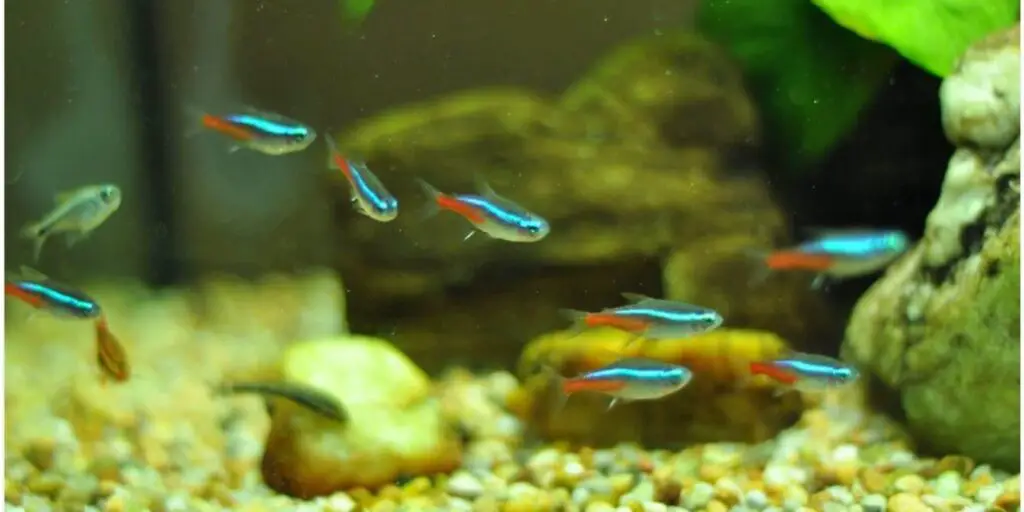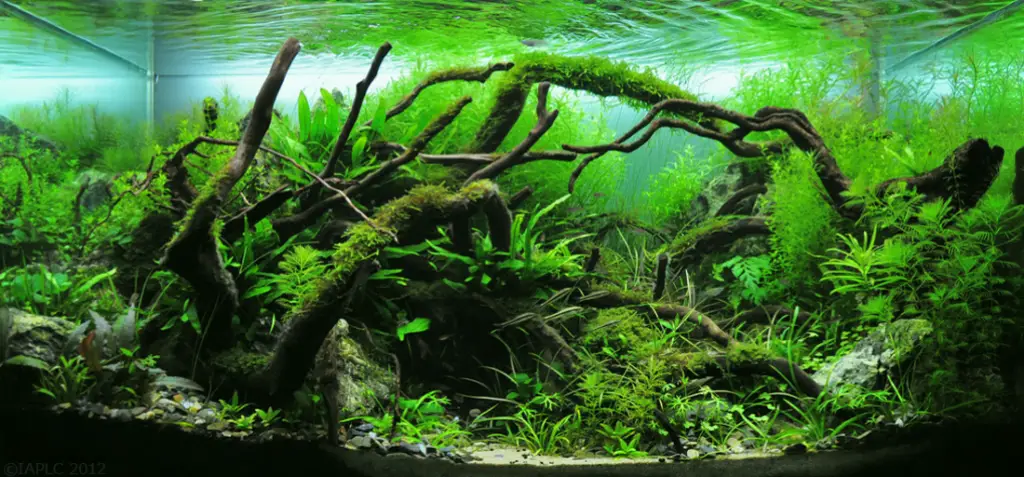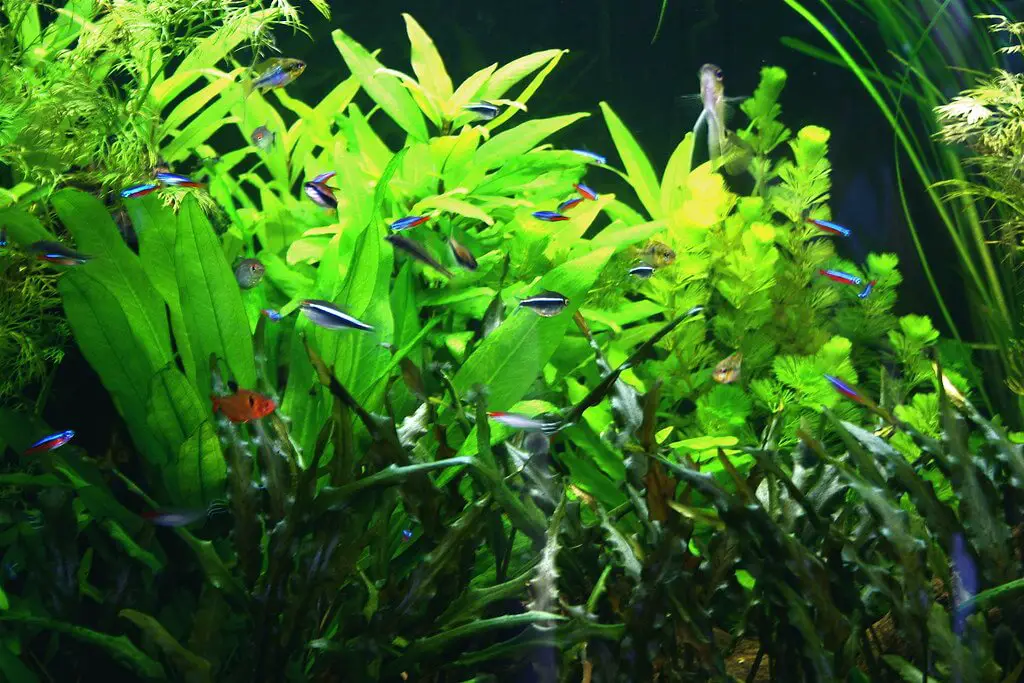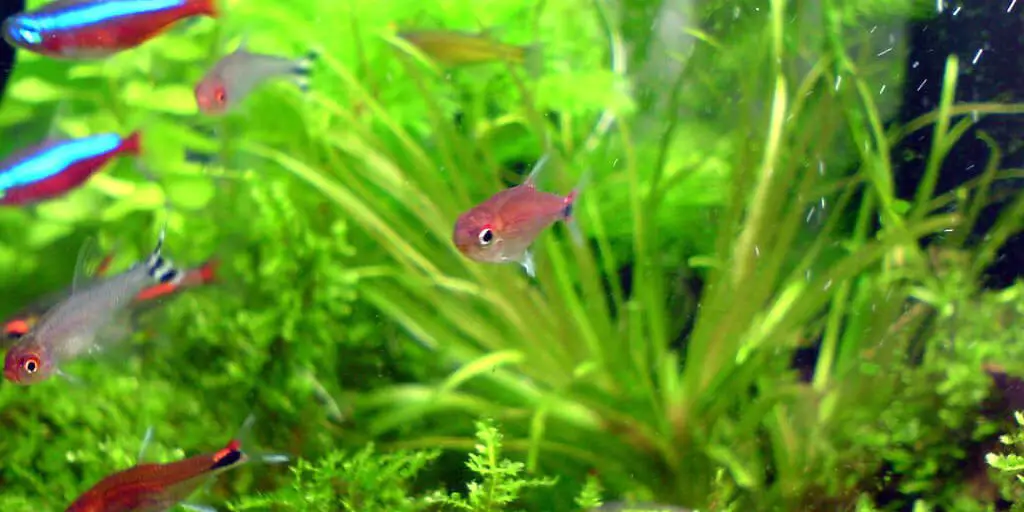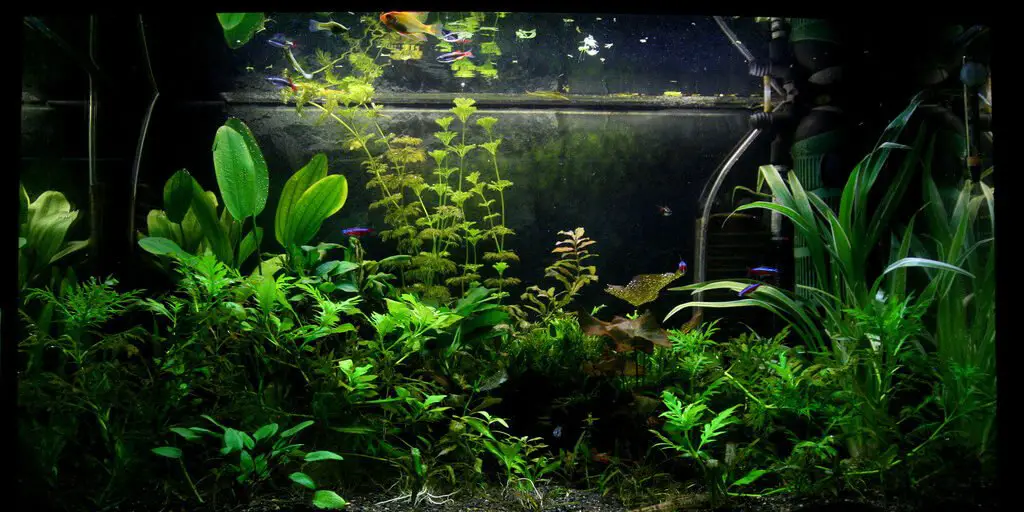Tetra fish are one of the most popular species for home aquariums. Tetras come from the small freshwater streams of South America, Central America, and Africa. You can see the tetras categorized into three different families:- Alestidae, Lebiasinidae, and Characidae. Characidae is the most popular one nowadays. You can differentiate this particular family from others as the Characidae has a small adipose fin between the dorsal and caudal fins. There are over 700 species of tetras known to us. And most of the tetras you see or buy from the market are captive bred. In this article, we are going to learn about breeding tetra fish the right way.
We can see that most people are into the idea of fishkeeping nowadays. Many people have researched and trained in this matter. However, taking care of fish is not so difficult. With the right maintenance on the quality of water and diet, it will enhance the quality of life of your fish in the aquarium. Fish enthusiasts are also interested in expanding the tetra family within their aquarium.
Tetra fish are hardy fish. Fish like tetras can adapt to various water parameters hence, making it very easy for even beginning aquarists. Many beginners are also fascinated to breed tetra fish. In my experience, if you are a beginner, better start breeding and raising species such as guppies, mollies, or platies. These species are forms of livebearers, which are easier to breed than tetra fish.
Anyway, breeding tetra fish is not exactly rocket science. With proper resources, right enthusiasm, and great dedication, you will be able to achieve breeding tetras. As a tetra owner, I am sure that you will find some tetras easier to breed than other tetras. In this article, I am going to provide you with information regarding the steps to breed tetras. In addition, I will mention all things considered and some of the easiest tetras to breed.
Continue reading for more information.
Steps for Preparation for Spawning Tetra Fish
In order to start something, you must be prepared with knowledge as well as resources. If you are not prepared, it is possible that you will not get the best result of the task that you have done. Breeding tetras is a very exciting task. As adventurous as it is, it is also a delicate process. Hence, preparation is a key aspect.
Here are some guidelines that can help you prepare for breeding tetras. Keep reading to know more.
1. Maintaining the Aquarium Conditions
This is the most important factor to consider when you make provision for a fish-breeding tank. Just as we need the right environmental condition to carry on with our lives in a healthy way, fish needs a good quality environment to bring on the new life. The conditions of the aquarium have a direct impact on the breeder pairs. The aquarium nitrogen should be consistent with no traces of ammonia, nitrite or nitrates. It will be better for the fish if you can replicate their natural environment conditions.
2. Purchasing Young Fish Stock
When you purchase a young species of fish, there will be less chance of any contaminations in the tank. The young fish stock will also have fewer opportunities to endure harsh waters. The young tetras can cost comparatively less than fully developed tetras. As the dealers do not mark these tetras as “breeding stock,” you can purchase them at a low price.
One thing that I like to keep in mind when I buy fish is to have a safety margin. Tetra fish tend to breed in a group. When you buy fish in small quantities, there can be a possibility of losing the fish due to some circumstances, or the fish may not be able to reproduce. Therefore, always try to breed tetras in a group. You will also have the choice of selecting pairs to breed as well.
When you buy the tetras in bulk, you will get a reasonable discount from the pet stores as well. Thus, this will make your expenses less.
3. Know What Food to Feed
A healthy and nutrition-rich diet is an essential part of the proper growth and development of your fish. Or else, the tetra will not reach its full potential. The excellent form of diet for tetras are the combination of a good quality dry food with a range of live foods mixed together. The dry foods are rich in vitamins and minerals, and the live food can provide your fish with other necessary proteins.
You should never ignore the diet and nutrition required by your tetra. Especially with tetras, you need to feed them at the proper time and at appropriate quantity. When you want to breed tetras, food is the essential aspect as it provides minerals, vitamins, and other essential nutrients that can help the fish in healthy breeding.
Regarding the proper fish diet, we have another article that mentions all the details. Check the tetra fish diet if you want to know in more detail.
4. Choosing Breeding Pairs / School
There is a lingering question; among all the fish you have, which will you use for breeding? First thing, you need a male and a female. You can either choose the pair yourself or let your fish decide for themselves.
You can determine the pair tetras if you see two of them swimming together always. I would prefer this type of tetras to breed as tetra chose each other naturally. Moreover, I like to keep this process as natural as possible. The bond tetras have, and the compatibility will be better for breeding; hence you let your fish decide it’s mate.
Breeding Tetra Fish
The first half of the breeding process is preparation. Once you have completed the preparation process, you have won half of the battle. Now, all you need is to take care of the tank where you are going to breed the tetras.
In this section of the article, you will find information regarding the breeding and raising the tetra fry.
Set up the Breeding Tank
You cannot breed the tetras in the same tank that you are keeping other species. You will need a separate tank for breeding. This is because the breeding pairs of tetras require different environmental conditions to spawn than normal living conditions.
The first thing you need to consider is setting up your tank. The tank should be set up as you normally do, focusing on certain key elements such as pH level, lightings, temperature, etc. The tank for breeding should have a 12*8*8 inch base. You can use this tank for breeding, incubate the eggs and place baby tetras.
Prepare the Water
The water you add in the breeding tank is the most important factor for breeding tetras. You need to use aged water. If you use tap water, make sure to get it de-chlorinated.
The breeding tank should have a temperature of around 77°F. Make sure the water for tetras is soft, having low mineral content. Many aquarists use a water softener, but I do not feel comfortable using them as it will have high sodium ion concentration.
The water should only be slightly acidic, having a pH level of 6 to 6.5. The hardness required for your breeding tank is under 30-ppm carbonate hardness.
For the soft water part, you can mix one part tap water with three parts reverse osmosis water. If you are having difficulty in doing this, you can also use fresh rainwater.
Set the Filtration System
The filtration system in your aquarium helps to filter the waste products and bacteria present in your aquarium. The filtration helps to protect the tetras from different infections. When you install a filtration system, it can act as a helping hand for you to maintain the water quality.
You do not have to install fancy aquarium filters for this. You can add a corner box filter that is gentle, or a small, air-driven filter is adequate. There are also sponge filters that help to keep the waters clean.
Lightings
The tetra’s natural habitat is with dense natural vegetation where there are no bright lightings. Thus, you should place your breeding tank in an environment that has dim or dark lighting. The tank doesn’t need to be in total darkness. You just need to place it somewhere with the low natural lights. You can also cover your tank with a newspaper.
Temperature
The water temperature should not be more than 78°F. As long as the water is within the range of the mid-70s, a heater is not required.
Introduce Tetras for Breeding in Your Breeding Tank
When you are ready to place your tetras into the tank, first make sure that you place a plastic tray having holes big enough for the eggs to fall through it. Also, ensure that you plant a fine-leaved plant or some java moss.
The ideal time preferred to introduce your tetras in the breeding tank is in the evening. Hence, you keep the breeding pairs into your prepped tank after the sunset. You cannot breed very young tetras. I know that in the previous part of this article, I mentioned that it is preferable if you buy young tetras. However, tetras ought to be at least 12 weeks old if you want to breed them.
After you add the breeding pairs in the tank, you should leave them for around a day or two. This is because the tetras usually breed after that period. First, you should keep the female tetras, and after 30 minutes or so, you can add the males.
Once you have done this, now all that is left is to wait.
Spawning
After two days of proper diet and maintenance, check for the eggs in the morning. Do not disturb the tetras, as you do not play any part in it. Spawning is a completely natural part. If you want to contribute to the spawning of fish, you can do that by letting the daylight into the tank.
The males dance around females for their attention. The spawning starts only when the females accept the proposal of the male tetras. You will notice this when you see the female tetra following the males to the spawning place they have chosen. You can view side-by-side trembling culminating in laying and fertilizing a small number of eggs.
Once the female tetras lay eggs, they scatter around the spawning site in a rolling or tumbling motion. This process is repeated several times until all female tetras lay all the eggs and fertilization takes place.
Remove Parent Tetras
It is necessary to remove the parent tetras from the breeding tank back to your normal tank. As the breeding process is tiresome, it consumes a great amount of energy of tetras. Because of this, tetras develop a great appetite to refill their energy. The tetras tend to eat anything they can find, from small organic matters to even the eggs.
Yes, the parent tetras indeed have the tendency to eat their eggs. In the natural environment, the movement of the eggs by streams and rivers prevents this. On the other hand, there is no movement of water inside the breeding aquarium.
You can prevent the parent tetras from eating the eggs by eliminating them from the breeding tank. You should monitor and feed the parent tetras in their conditioning tank. The plastic trays that you placed at the bottom of the tank also play a great role in avoiding this.
Maintain the Tank for the Tetra Fry
Once you remove the parent tetras, it is important that you also remove at least 50% of the water. This water can be a bit excessive for the fry as it was mainly prepared for breeding purposes. When you change the water, you will be eliminating other waste products deposited by the breeders.
If you do not remove the waste on time, it can decompose into matters that are harmful to the eggs. After this, you can also cover the tank with a cardboard box for over 36 hours, as eggs are sensitive to bright light.
Wait for the Eggs to Hatch
The total number of eggs can vary from a minimum of 50 to over 500. However, not all eggs will hatch. The eggs will hatch only after 24 hours. You will notice tiny splinters like baby tetras swimming around the tank.
If you do not see any fry, you can remove the cardboard box and inspect it gently. Make sure that you do not disturb the eggs. Do not use bright lights. Once you see what is going on, you can put the cover back on and inspect it accordingly.
Feeding the Fry
The eggs hatch, and you can see the fish fry. The fries are very tiny and helpless. It is your responsibility to make sure that these fries get to live and develop. Just as we take care of newborn babies, keep them vaccinated for future immunity, we need to do the same for the fish fry.
The fry is very delicate, and without proper nutrition, they will not flourish into mature tetras. You need to feed them quality foods. There is commercially prepared food for the tiny new tetras. Keep in mind the quantity of the foods you are going to provide.
Only feed the newborn fry after a day or two as they will be carrying their food in their belly.
As the fry are tiny, you can feed them with micro foods. This can be either tiny live foods called “infusoria.” This is very easy to culture and comes in various types, which helps in providing the fry with a wide varieties diet. If you are planning to feed the fry, live foods, you should prepare them beforehand.
Another food that is best for the fry in the early stages is “micro worms.” The most common food in this category includes newly hatched brine shrimp nauplii. The foods for your fry are commonly available in the local market.
If you are having trouble, you can always ask experts at your local pet stores. In addition, you can carry out your own research, which will also help you understand better.
How often Tetra Breed?
The common question asked by tetra hobbyists is, how often can you breed the tetras? In the wild, the tetras mostly breed during the raining seasons. This is when occurring naturally, and on the aquarium, you cannot expect to rain. On artificial conditions, i.e., on the aquarium, you can choose to spawn the adult and mature tetras every two weeks.
Conclusion
Breeding tetra fish is quite easy; all you need the right dedication and passion. You can have great fun in breeding the tetras if you do it the right way. You may need extra effort if this is your first time. However, following the proper instructions, you can also be an expert in no time.
I hope that this article has made some things clear for you regarding breeding tetras.
